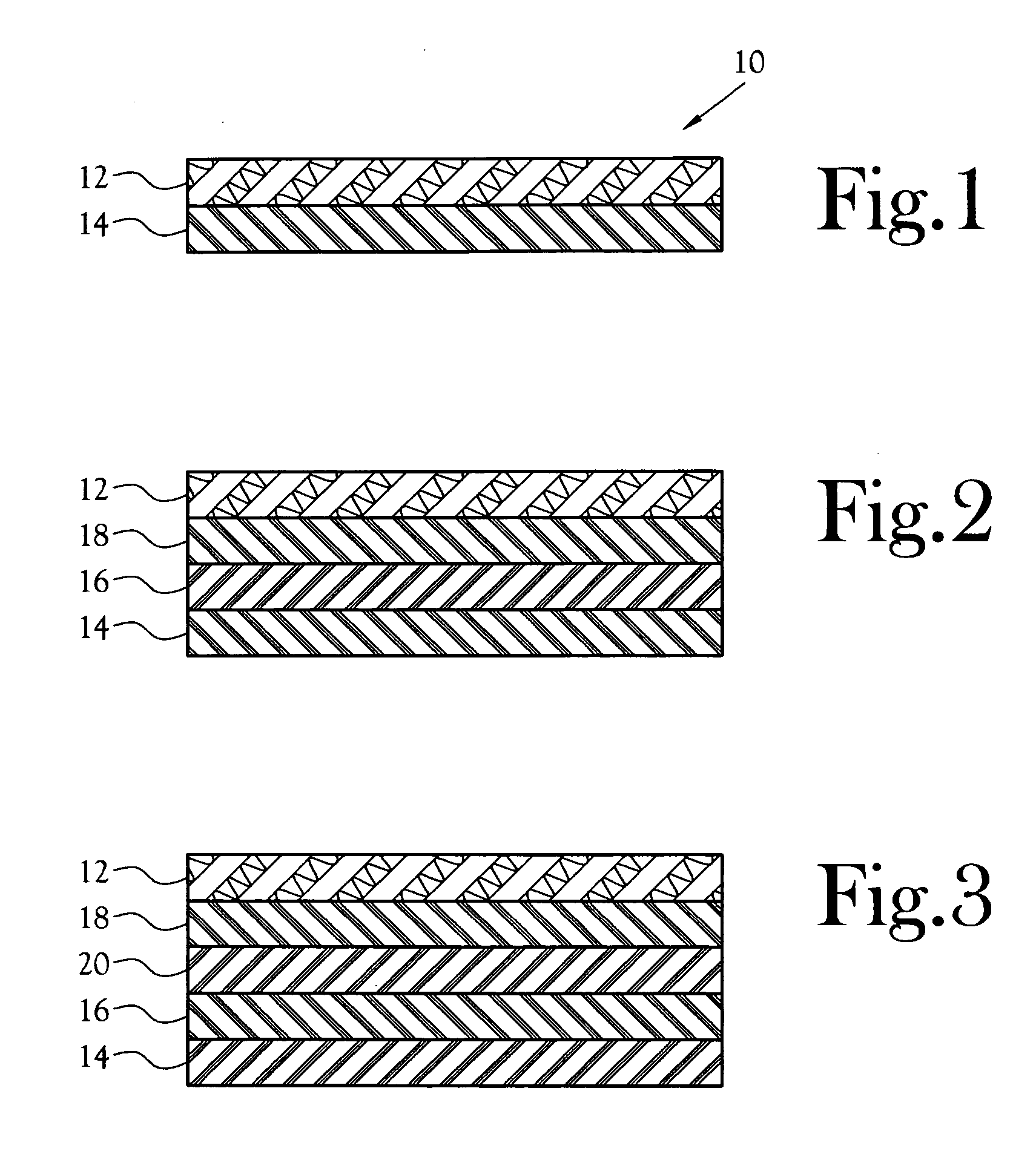Low surface energy blends useful in the manufacture of ovenable containers
a technology of low surface energy and blends, applied in the field of laminates, can solve the problems of difficult production and cost of laminates, difficult to obtain good adhesion of pmp layers to the underlying grease resistant layer, and no longer commercially available copolymers, etc., and achieves high starch and sugar content. , good release
- Summary
- Abstract
- Description
- Claims
- Application Information
AI Technical Summary
Benefits of technology
Problems solved by technology
Method used
Image
Examples
Embodiment Construction
[0013] With reference to FIG. 1, one embodiment of a laminate 10 embodying various of the features of the present invention includes a paper board substrate 12 and a food contact release layer 14.
[0014] In FIG. 2, there is depicted a further embodiment of the laminate depicted in FIG. 1 and including a tie layer 16 and a grease resistant layer 18 interposed between the food contact release layer 14 and the paperboard 12. In similar manner, FIG. 3 depicts the laminate of FIG. 2 and including a further tie layer 20 interposed between the first tie layer and the grease resistant layer 18.
[0015] In one embodiment, the paperboard substrate is bleached board having a basis weight of between about 18 and about 320 lbs / 3000 ft2. The choice of basis weight for the paperboard substrate is primarily a function of the strength and / or rigidity needed or desired in the end product container. Unbleached kraft having a basis weight in the same range can also be used for applications where a white...
PUM
| Property | Measurement | Unit |
|---|---|---|
| Temperature | aaaaa | aaaaa |
| Fraction | aaaaa | aaaaa |
| Fraction | aaaaa | aaaaa |
Abstract
Description
Claims
Application Information
 Login to View More
Login to View More - R&D
- Intellectual Property
- Life Sciences
- Materials
- Tech Scout
- Unparalleled Data Quality
- Higher Quality Content
- 60% Fewer Hallucinations
Browse by: Latest US Patents, China's latest patents, Technical Efficacy Thesaurus, Application Domain, Technology Topic, Popular Technical Reports.
© 2025 PatSnap. All rights reserved.Legal|Privacy policy|Modern Slavery Act Transparency Statement|Sitemap|About US| Contact US: help@patsnap.com


